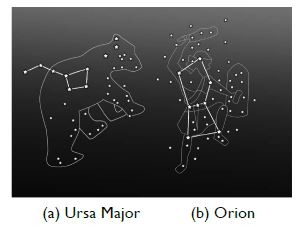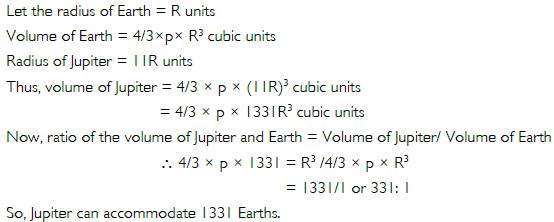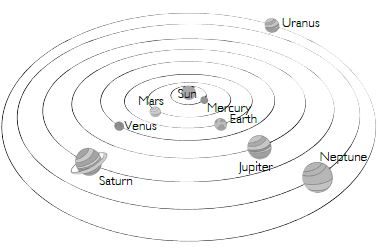Question 1:
Which of the following is NOT a member of the solar system?
- An asteroid
- A satellite
- A constellation
- A comet
Answer:
A constellation
Question 2:
Which of the following is NOT a planet of the Sun?
- Sirius
- Mercury
- Saturn
- Earth
Answer:
Sirius
Question 3:
Phases of the Moon occur because
- we can see only that part of the Moon which reflects light towards us.
- our distance from the Moon keeps changing.
- the shadow of the Earth covers only a part of the Moon’s surface.
- the thickness of the Moon’s atmosphere is not constant.
Answer:
we can see only that part of the Moon which reflects light towards us.
Question 4:
The planet which is farthest from the Sun is ____________.
Answer:
Neptune
Question 5:
The planet which appears reddish in colour is ____________.
Answer:
Mars
Question 6:
A group of stars that appear to form a pattern in the sky is known as a ____________.
Answer:
Constellation
Question 7:
A celestial body that revolves around a planet is known as ___________.
Answer:
Satellite
Question 8:
Shooting stars are actually not ____________.
Answer:
Stars
Question 9:
Asteroids are found between the orbits of ___________and ___________.
Answer:
Mars, Jupiter
Question 10:
Pole Star is a member of the solar system.
- TRUE
- FALSE
Answer:
TRUE
Question 11:
Mercury is the smallest planet of the solar system.
- TRUE
- FALSE
Answer:
TRUE
Question 12:
Uranus is the farthest planet in the solar system.
- TRUE
- FALSE
Answer:
FALSE
Question 13:
INSAT is an artificial satellite.
- TRUE
- FALSE
Answer:
TRUE
Question 14:
There are nine planets in the solar system.
- TRUE
- FALSE
Answer:
FALSE
Question 15:
Constellation Orion can be seen only with a telescope.
- TRUE
- FALSE
Answer:
FALSE
Question 16:
Match the items in column A with one or more items in column B.
- TRUE
- FALSE
Answer:
FALSE
Question 17:
Match the items in column A with one or more items in column B.
- Inner planets
- Outer planets
- Constellation
- Satellite of the Earth
Answer:
(i). (b), (ii). (a), (iii). (c), (iv). (d)
Question 18:
In which part of the sky can you find Venus if it is visible as an evening star?
Answer:
Venus is visible as an evening star in the western part of the sky
Question 19:
Name the largest planet of the solar system.
Answer:
Jupiter
Question 20:
What is a constellation? Name any two constellations.
Answer:
A groups of stars that appear to form recognisable shapes/patterns are called constellations. The Great Bear and Orion are two constellations.
Question 21:
Draw sketches to show the relative positions of prominent stars in (a) Ursa Major and (b) Orion
Answer:
Question 22:
Name two objects other than planets which are members of the solar system.
Answer:
Asteroids and Meteors
Question 23:
Explain how you can locate the Pole Star with the help of Ursa Major.
Answer:
The Pole Star is located at the end of Ursa Major. A straight line from the last two stars when extended towards the north leads to the Pole Star.
Question 24:
Do all the stars in the sky move? Explain.
Answer:
No, all stars in the sky do not move. However, they appear to move from east to west due to the rotation of the Earth about its axis.
Question 25:
Why is the distance between stars expressed in light years? What do you understand by the statement that a star is eight light years away from the Earth?
Answer:
Stars are situated very far (many millions of kilometres) away from the Earth. Such large distance cannot be conveniently expressed in kilometres. Hence, it is expressed in a unit called light year. One light year is the distance travelled by light in one year. One light year is equivalent to 9.46 × 1012 km. If we say that a star is eight light years away from earth, it means that the light from the star will reach the earth in eight years.
Question 26:
The radius of Jupiter is 11 times the radius of the Earth. Calculate the ratio of the volumes of Jupiter and the Earth. How many Earths can Jupiter accommodate?
Answer:
Question 27:
Boojho made the following sketch of the solar system. Is the sketch correct? If not, correct it.
Answer:
The sketch is not correct. The correct sketch is as follows:




